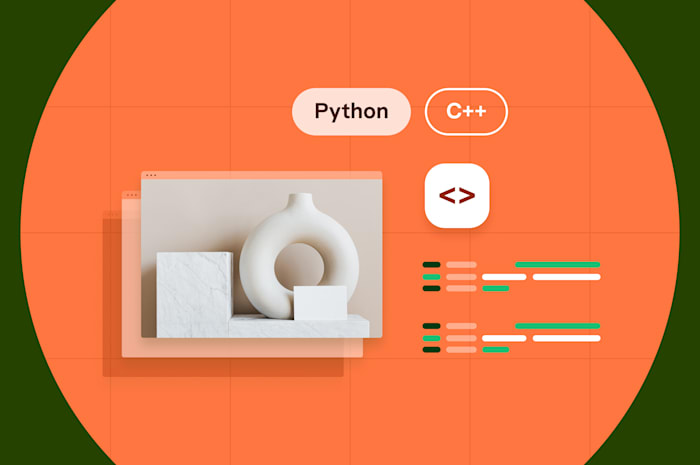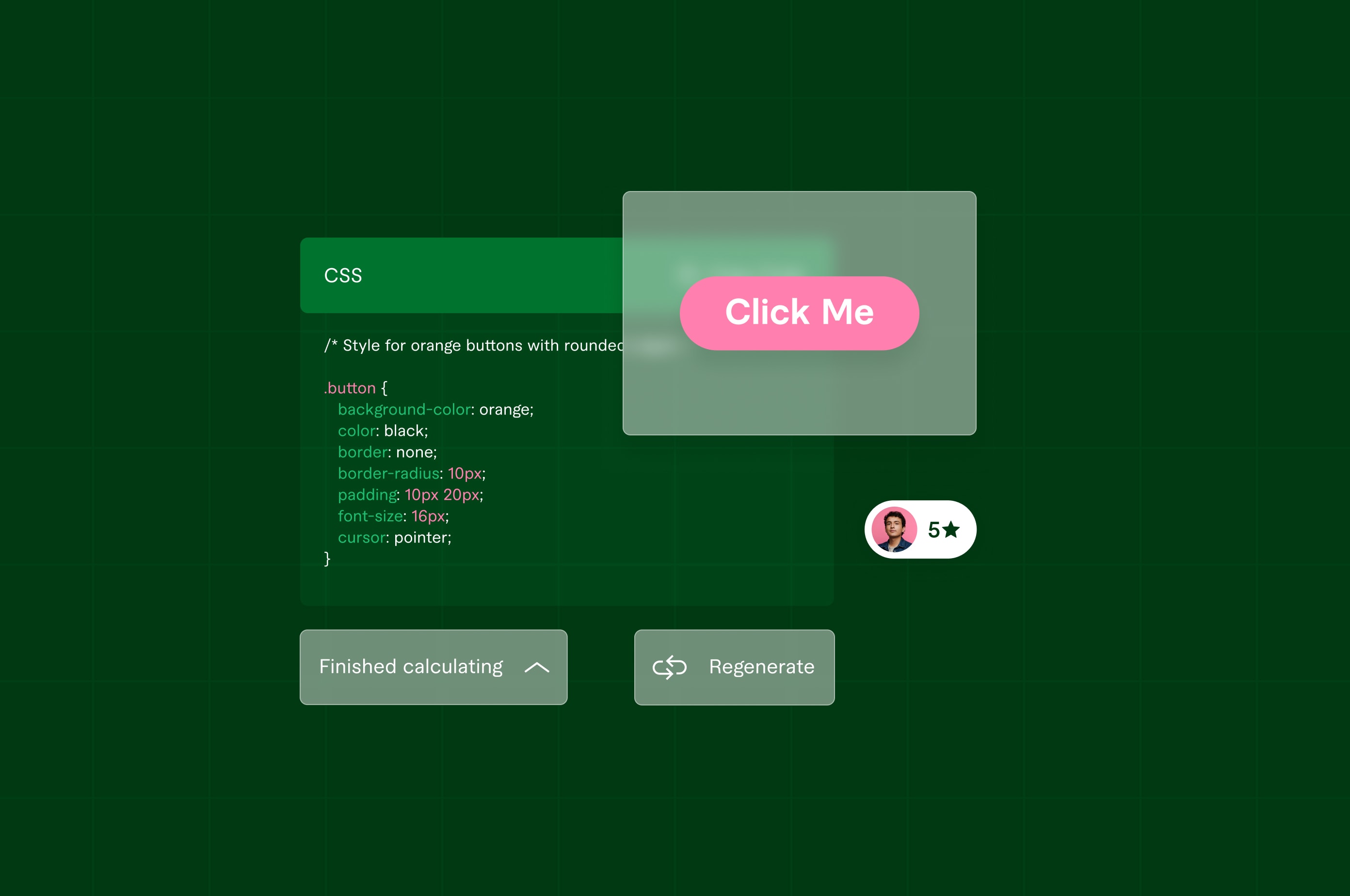Java vs. Scala: 2024 Differences and Why Choose One Over the Other
Although Scala runs on the Java Virtual Machine, Java and Scala differ significantly in syntax, semantics, and use cases.
 November 11, 2023
November 11, 2023 11 minute reading
11 minute reading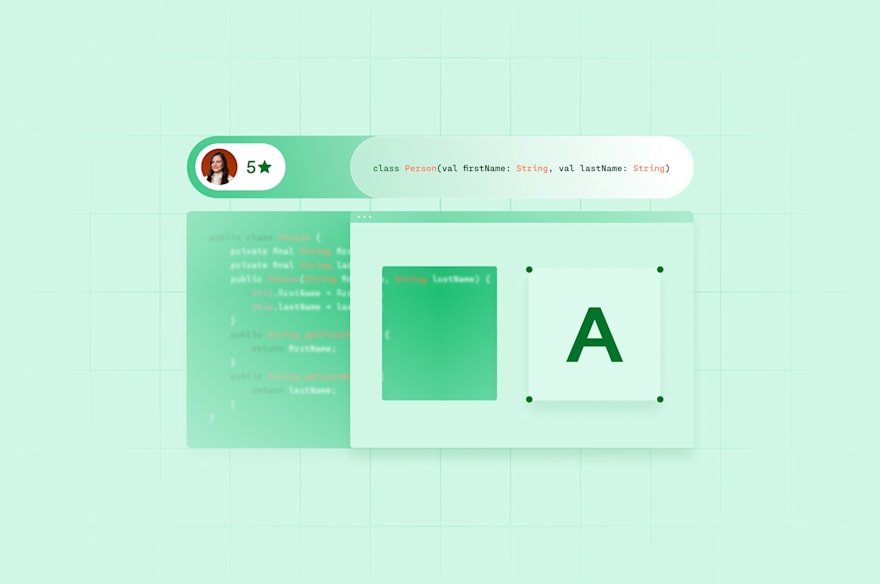
Despite being used by only 3.2% of professional programmers, the Scala programming language bridges a significant gap between purely functional and general-purpose programming languages. This niche means that major companies like Netflix and Twitter favor it for data engineering programming tasks, even over more popular languages like Python or Ruby.
Whereas you’re unlikely to use Scala for domains where other languages are well-entrenched, such as Python for web development or C# for desktop development, Scala is an excellent choice for data science and data engineering projects. Its functional nature makes it highly suitable for mathematics-heavy programming.
In contrast, its object-oriented programming (OOP) nature and compatibility with the Java virtual machine (JVM) means you can leverage Java programming knowledge and libraries to speed up development.
Let’s dive into the differences and similarities between Scala and Java and establish when you might use one over the other.
What is functional programming?
To truly grasp the differences between Java and Scala, you must understand functional programming.
Functional programming concepts can be challenging to grasp for programmers familiar with object-oriented programming (OOP) or procedural programming. It’s impossible to cover all the major points here, but we’ll tackle the most important ones.
The primary source of confusion stems from using the word “function” in many programming languages to denote a “procedure” that returns a value. The following java “function” takes two numbers and sums them together.

Java function.
To understand functional programming, you must forget the word “function” as used in traditional programming. The word “function” in “functional programming” refers to the more abstract meaning of mathematical functions.
In mathematics, a function is roughly defined as a relation of inputs and a set of outputs, where each input relates exactly to one output. In mathematical functions, the result of the output is always the same for a set of given inputs. That means we can’t introduce, for example, random numbers or timestamps into functional programming functions because they would change the output.
This definition has significant ramifications. For this comparison, it’s enough to know the following key points about purely functional programming languages:
Immutability: Data structures are immutable. In the case of variables, that means you can’t change the value of a variable once it’s assigned. This makes debugging much easier.
First-class citizens: Functions are treated as first-class citizens, meaning you can treat them exactly like other programming elements, such as passing them as parameters or assigning functions to variables. This often makes functional programming code a lot cleaner to read.
Higher-order functions: Functional programming supports higher-order functions, which are functions that take other functions as parameters.
No side-effects: Functions produce no side effects, making programs more predictable and easier to debug.
Strong typing: Functional languages have a strong type system. Scala is a statically typed language, but it also infers types implicitly based on the context of the code.
Lazy evaluation: Functional languages evaluate expressions only when needed, making them especially suited to big data projects because they don’t need to evaluate the entire dataset at once.
Statelessness: Functions don’t maintain state between invocations, making code more modular.
If you’d like to learn about functional programming more thoroughly, you can buy online coding lessons from Fiverr freelancers to help you.
An overview of Java
Java is a general-purpose programming language developed by Sun Microsystems, first released in 1995. It’s become one of the most popular programming languages in the world. Java is used in everything from small resource-constrained devices to powerful machines at major financial institutions.
Java is object-oriented and built on the “write once, run anywhere” motto, or WORA. Java code compiles into bytecode, which runs on the JVM, a runtime that compiles bytecode into machine code at runtime. Java programmers only need to maintain a single codebase for software that can then run on almost any device.
Before the emergence of smartphones, Java was the leading choice for mobile device apps. But new device types, particularly the iPhone and Android, changed that.
Although Google once favored Java for Android app development, its preferred language for Android app development is now Kotlin. iPhone developers typically develop in Apple’s proprietary Swift language. Game developers usually work in a gaming engine such as Unity or Unreal Engine, which use C# and C++, respectively.
Still, Java emerged when no other programming language like it existed. Java solved many of the C++ problems developers faced, such as a lack of standard libraries and complex memory management. It speeded up development immensely and quickly grew to become one of the most popular programming languages in the world. As a result, an enormous quantity of legacy code exists, which works perfectly fine as it is.
Scala wouldn’t exist without Java, and Java’s immense popularity is one of the best reasons to choose Scala over other functional programming languages. Scala plugs into the extensive Java ecosystem that other functional programming languages are siloed from.
💡 Learn more about coding languages and frameworks in our programming guides:
jQuery vs. React: Differences and Why to Choose One Over the Other
Java vs. Scala: Differences and Why Choose One Over the Other
Python vs. C++: Which Programming Language is Best for Your Project?
TypeScript vs. JavaScript: The differences and why you should pick one over the other
An overview of Scala
Scala is a multi-paradigm programming language created by Martin Odersky, who also created the GJ (generic Java) compiler. The GJ compiler later became the basis of javac, the command-line Java compiler.
Odersky is a strong proponent of functional programming languages and began work on Scala in 2002.
Scala code compiles into bytecode. You can use Scala code inside Java applications and vice versa, allowing for complete interoperability between the two languages.
Scala supports both OOP and functional programming paradigms. Its tight integration with Java means that Scala integrates easily with the existing JVM-heavy big data ecosystem. You can also use Java libraries in Scala development, shortening the runway for many projects.
Whereas Java 8 has since implemented some functional programming features, such as creating higher-order functions and assigning functions to variables, Java remains firmly an object-oriented language.
The Java programming language lacks many of the core functional programming features that Scala brings. Scala’s ability to run alongside Java code means that Java developers can more easily implement functional programming features in their projects without the massive learning curve required for other functional languages, such as Haskell.
Scala is also becoming more popular in general-purpose software development. Compared with Java’s verbosity, Scala’s clean, concise nature reduces the need for boilerplate code. One Reddit discussion is filled with comments from ex-Java developers who switched to Java years ago and never looked back.
Similarities and differences between Scala and Java
The most significant similarity between Scala and Java is that they’re both OOP languages that run on the JVM.
Beyond that, the languages have more differences than similarities.
Syntax
The syntax and semantics of Scala and Java code differ significantly. Scala uses a concise, expressive syntax, while Java favors a more verbose approach. Whereas it’s sometimes possible to write Scala code using a Java pattern, this isn’t the norm.
For example, the following Scala code declares an add function and then prints the result of the function to the console. The code takes up two lines.

Simple Scala add function.
The code follows a compact style, uses no return statement, and could be further shortened by removing the return type—Int:

Scala add function without a return type.
Scala uses type inference, so the compiler knows that the return type for the above function is an Int.
However, it’s also possible to write the above code using a style that looks more like Java:

Scala supports Java syntax to a degree.
Scala’s support for some of Java’s syntax, such as curly brackets, semicolons, and the return keyword to return a value from a function, means that Java programmers can maintain a degree of their coding style while learning Scala’s more concise approach.
Writing the same function in Java would look like this:
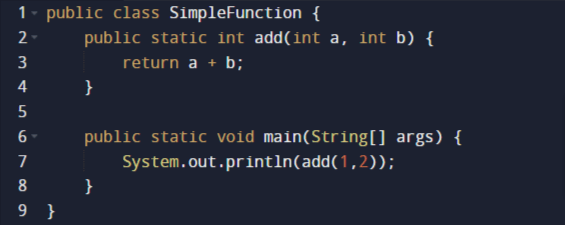
Java “add” function is more verbose than Scala.
In the Scala code, we even omitted the main method required to define an entry point in most Java applications because Scala also supports scripting-style coding, like Python.
Scala’s script support additionally makes it a versatile choice for creating utilities.
Learning curve
The syntactic and semantic differences between Scala and Java are significant. Scala provides a comprehensive Scala tutorial for Java programmers, detailing each language’s way of doing things.
Whether beginners find it easier to learn Scala or Java first is essentially a subjective opinion. Scala is generally more readable than Java and resembles Python code in many ways.
Programmers experienced in one of the C-based languages, such as C, Perl, or Java, might find the Scala constructs somewhat jolting. However, new programmers will likely grasp the code more easily.
For example, the following Java code defines a Person class with alternative constructors. The code takes up 30 lines and is a challenge to read:

Java class with alternative constructors.
The Scala equivalent is far more readable and intuitive:
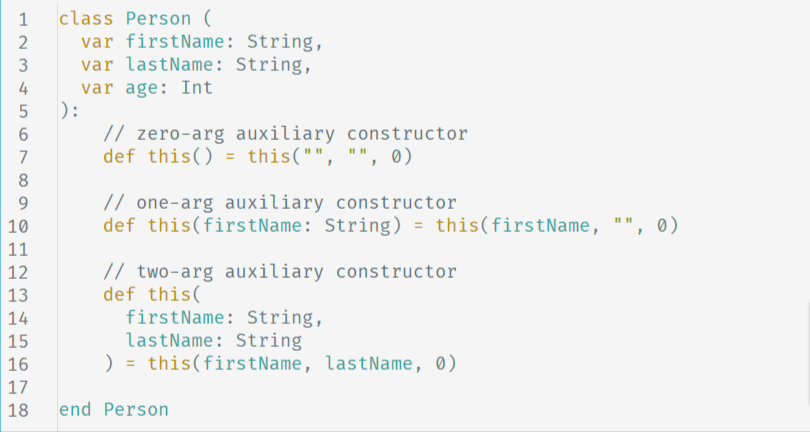
Scala Person class demonstrating alternative constructors.
Scala control structures, such as the if statement, don’t require parentheses or curly brackets:

If, else if, if statement in Java.

If, else if, if statement in Scala.
Similar differences exist for while loops, for loops, and the switch statement, which the Scala tutorial for Java developers covers in depth.
If you’re a Java developer who wants to learn Scala, or vice versa, you can also buy online coding lessons from Fiverr freelancers to give you a boost.
Data types
In Scala, every data type is an object, allowing Scala developers to use built-in methods to work with these types. Java has no such feature, which is also a major difference between Java and C#.
For example, when declaring an integer variable, you can access integer object methods such as max(), min(), compare(), and numerous other built-in methods that help you work with that data type. In Java, int is a primitive data type, not an object.
Scala’s use of objects for primitive data types doesn’t negatively impact code efficiency because the compiler optimizes the data types when compiling the source code.

Example of Scala data type built-in methods.
Immutability
In keeping with its functional programming paradigm, Scala prefers immutability, and defaults to it wherever possible.
In Scala, you can declare variables in two ways:
Using the val keyword
Using the var keyword
Variables declared with val are immutable, similar to the Java final keyword. Variables declared with var can be changed.
Scala strongly encourages declaring variables with val.
In Scala, collections are immutable by default.
Type inference
Scala supports type inference, which allows you to often omit type annotations, while Java has extremely limited type inference. In Java, you typically specify the data type when declaring a variable.
Although Scala’s robust type inference can give the impression that it’s a dynamically typed language, it’s strictly a statically typed language. Every expression has a type that’s known at compile-time, either through type inference or explicit type annotations.
Interfaces and traits
Scala’s closest implementation of Java interfaces is the trait. Both interfaces and traits define a contract that classes must fulfill, but some key differences exist.
Method implementations: Traits in Scala can have method implementations, while traditional Java interfaces couldn’t have any until Java 8. Starting with Java 8, interfaces can have default methods, but even these are more limited than Scala traits.
State: Traits can have fields (state), whereas Java interfaces cannot have instance fields.
Access modifiers: Scala traits allow you to use access modifiers, like private and protected for methods, while in Java interfaces, all methods are implicitly public.
Operator overloading
One of Java’s significant limitations is that it doesn’t support operator overloading.
The simple answer to whether Scala supports operator overloading is “Yes.” Under the hood, however, it’s a lot more complex.
Scala doesn’t, technically, have any operators. Symbols such as “+” and “-” are just symbols for methods. As such, it’s possible to “overload” these “methods” and provide the illusion of operator overloading. From a general programming perspective, there’s no functional difference between Scala’s implementation and other languages’ support for operator overloading.
Backward compatibility
Java places a strong emphasis on backward compatibility. In most cases, code written in older versions of Java can run on newer versions of the JVM. Exceptions exist, and some features become deprecated, but backward compatibility is a core tenet of the Java ecosystem.
Scala, on the other hand, does not guarantee backward compatibility between major versions. Changes to the language or its standard library can break existing code when upgrading to a newer Scala version.
If you need help upgrading code to become compatible with more recent versions, you can buy software development services from Fiverr freelancers to help you.
Concurrency
Java and Scala follow different concurrency paradigms. Scala recommends using an “Actor model” for concurrency programming, whereas Java is restricted to the more traditional “Thread model.”
Threads can be considered “sub-processes” within an application’s process space. Concurrency programming with threads requires programmers to initiate threads, handle their lifecycle, and manage synchronization, requiring careful management of resources and shared state. Thread concurrency programming is powerful but can quickly grow complex.
An Actor is any entity that can give and receive messages. Handling actors in a concurrency context is typically simpler than thread programming, but the model achieves this by sacrificing low-level control.
The thread model and the actor model both have pros and cons. Standard Java doesn’t support the actor model, but you can implement actor model concurrency programming in Java by leveraging third-party frameworks such as Akka, which implements a Java API.
Scala supports both the thread and actor model innately, but leans toward the actor model.
Programming tools
If you’re a beginner in either language, you can dabble with simple Scala or Java source code in one of the online IDEs (integrated development environments).
Scastie lets you write and compile Scala code in your browser.
You can use Programize or JDoodle to run basic Java code online.
As for desktop IDEs, the most popular Java development IDEs are:
Eclipse
IntelliJ IDEA
NetBeans
VS Code
Android Studio
Eclipse, IntelliJ, NetBeans, and VS Code all have plug-ins that let you also develop Scala apps.
You can additionally transpile Scala code into JavaScript using Scala.js. Similar to TypeScript, Scalar.js provides a way to write type-safe JavaScript code. You write your code in Scala, and the compiler converts it to vanilla JavaScript that can run in the browser.
No such mainstream tool exists for Java. Google Web Toolkit once attempted it, but this framework is now deprecated.
Why Scala is excellent for machine learning
Scala has a distinct advantage over Java in machine learning and data science tasks. For one thing, it integrates seamlessly with Apache Spark—a leading framework for big data analytics that provides both batch and real-time data processing features. The Apache Spark framework is itself written in Scala, although it does provide Java APIs.
Secondly, Scala’s functional programming features make it easier to write concise and clean code for complex mathematical computations, which are common in machine learning. The language’s strong type inference helps with data transformation and algorithm implementation. And its emphasis on immutable data can make it easier to reason about and debug machine learning algorithms, which often involve complex state manipulations.
Scala code also tends to be less verbose than Java, making the codebase potentially easier to manage and read.
In 2019, Netflix engineers gave a one-hour presentation praising the many reasons Scala is an excellent choice for machine-learning tasks.
Regardless of the programming language you choose, you can buy machine-learning services from Fiverr freelancers to help you with a wide array of other machine-learning tasks.
Buy Java or Scala programming services from Fiverr freelancers
Fiverr is a marketplace of expert freelancers skilled in everything from content creation and graphic design to AI programming and web development. Freelancers are ranked according to experience and customer satisfaction.
If you need help with a Java or Scala project, Fiverr almost certainly has an experienced freelancer to help you.
To find freelancers for your project, sign up for Fiverr and search for the skills you need.
To get started, sign up for Fiverr today.

